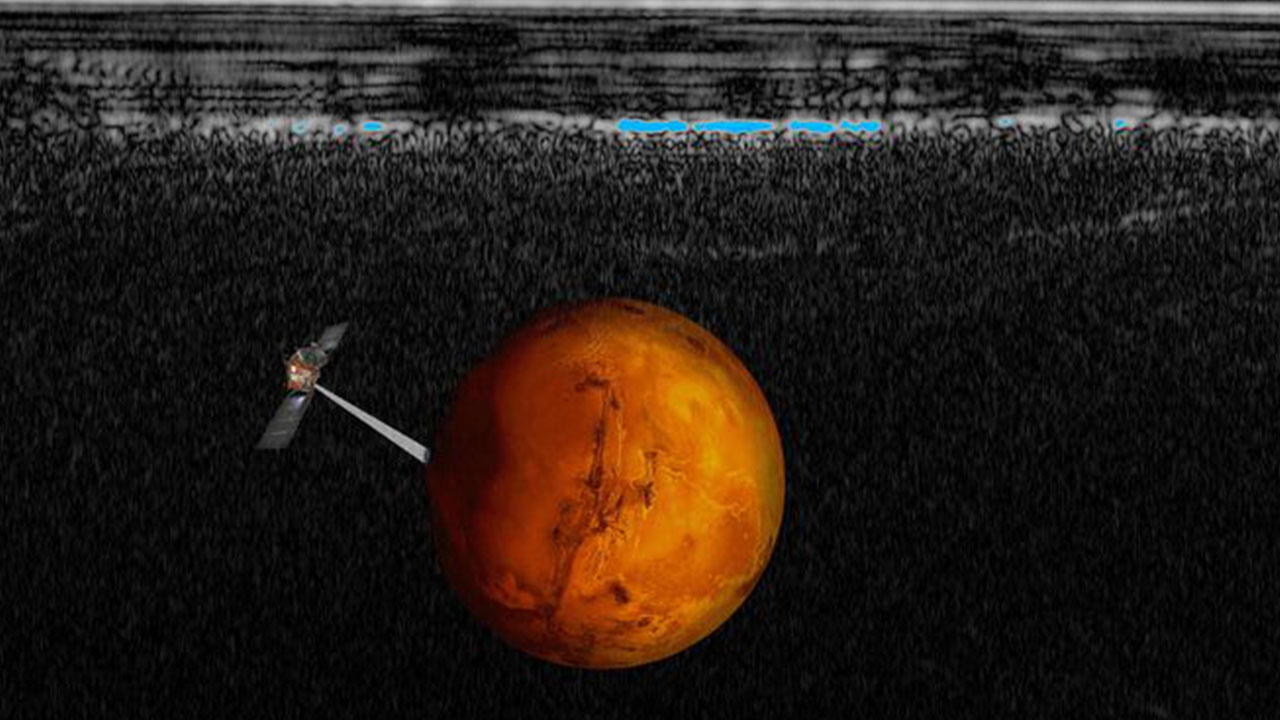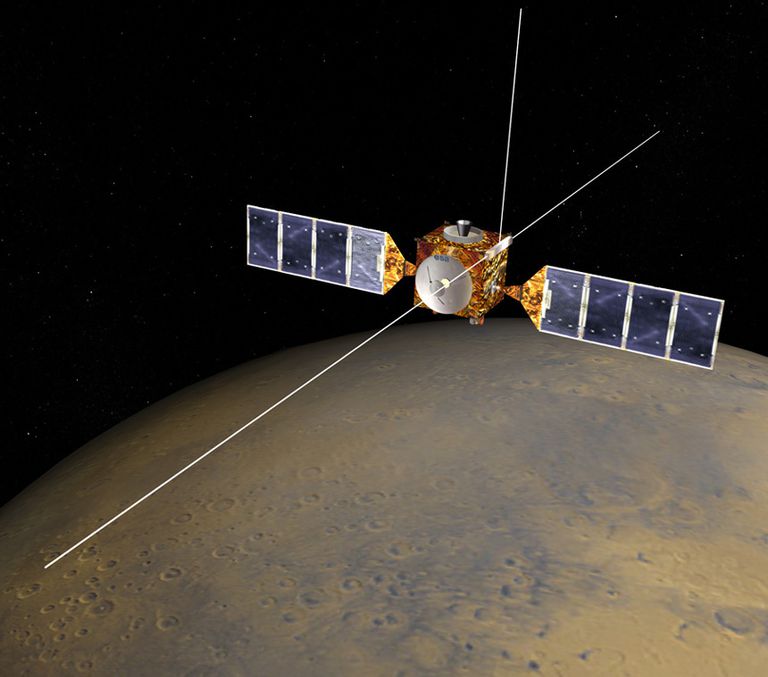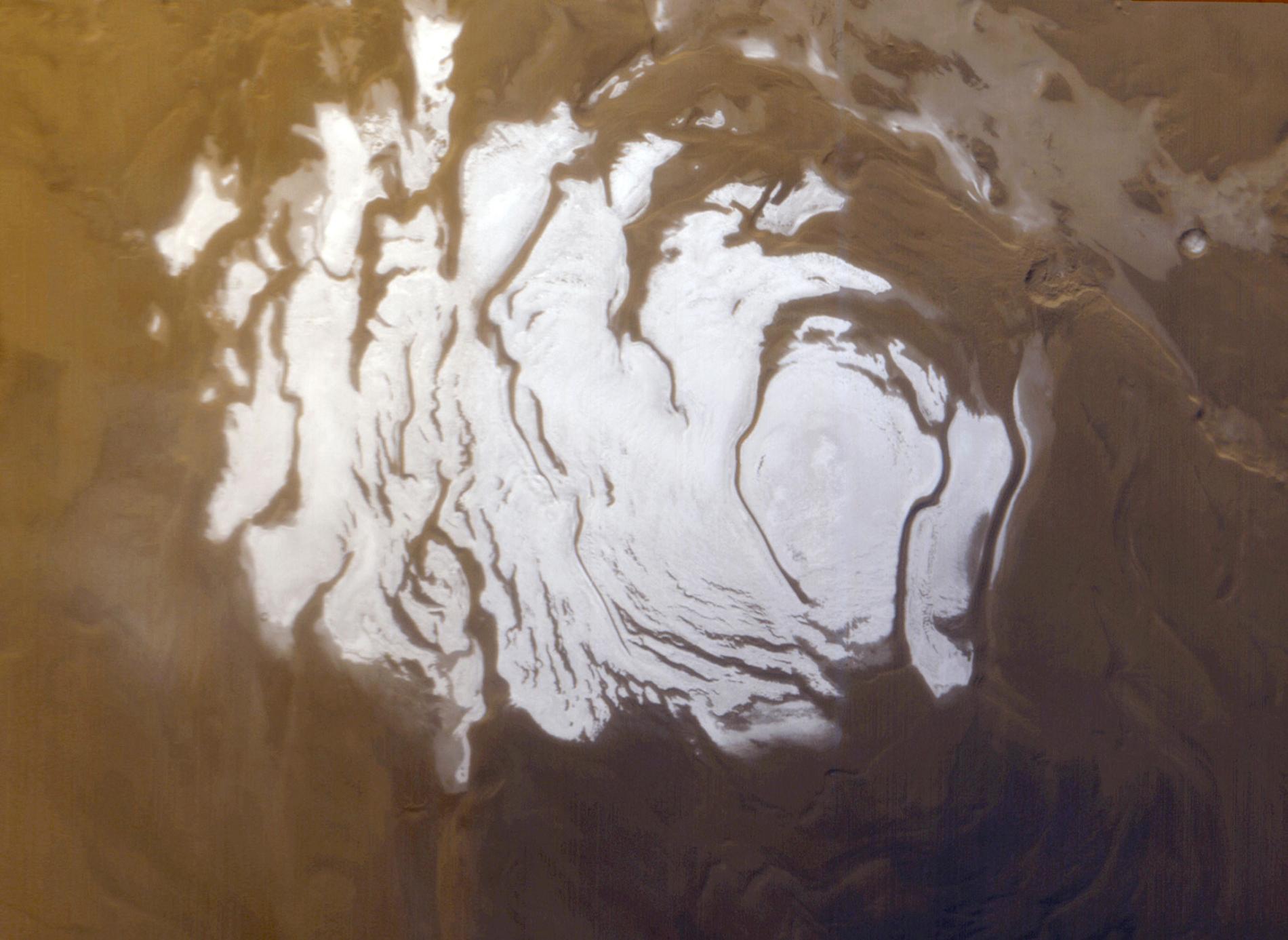Everything

ESA/INAF/DAVIDE COERO BORGA
The planet of Mars and all it inhabits has fascinated scientists for thousands of years, and while so much has been learnt about the mysterious planet, there is so many unanswered questions about the red rock. Yesterday, Mars Express Spacecraft discovered what appears to be a subglacial lake, just a mile or so beneath the surface.
Mars Express, a European Space Agency probe has orbited the planet since 2003, and 18 months after its arrival, the craft deployed two 20-meter radar booms, forming a 40-meter antenna. Using this same technology, a ground-penetrating radar was used to detect the mass of water, considered roughly 20 kilometres wide and no more than a metre deep. While scientists never doubted there would be water found on Mars, if this most recent discovery proves to be true, it will be the most significant finding to date.

In 2004, the Opportunity rover provided samples of tiny spherical deposits and after comprehensive mineralogy studies conducted by the Curiosity rover, it is believed that vast lakes and rivers dominated the surface of Mars billions of years ago. But today, Mars is a dry and toxic desert, which leaves scientists to wonder what happened to all the water.
Further studies of the the lake suggest that the liquid water is very cold (some suggest around -10 degrees Celsius), and rather salty. Such subglacial lakes on Earth have been shown to support life in some cases. “There are microorganisms that are capable of surviving well below zero even without being in contact with water, and there are microorganisms that can use the salt, presumably the salt in the water on Mars… for their metabolism.” And if there is one mass of water, it is possible there is a whole system of underground lakes, making it possible for human settlement in the future.

“What you see here is potentially the presence of water, of shelter … and you’re going to produce nutrients out of the minerals,” told Nathalie Cabrol of the SETI Institute to National Geographic. “What you need is a source of energy … and if there were recent volcanoes in the polar regions, then this is definitely a place that would become a high habitability and life target.”
There is still so much research that will need to take place before life attempts to sustain life on the planet. The 2020 Chinese Mars Mission will carry a radar sounding instrument that will operate in between the frequencies of MARSIS and SHARAD. If this Chinese mission also spots radar reflections that indicate a subglacial lake in the same location as MARSIS, the implications for possible water ecosystems beneath the surface of Mars will be profound.
Cover Image: ESA/INAF/DAVIDE COERO BORGA